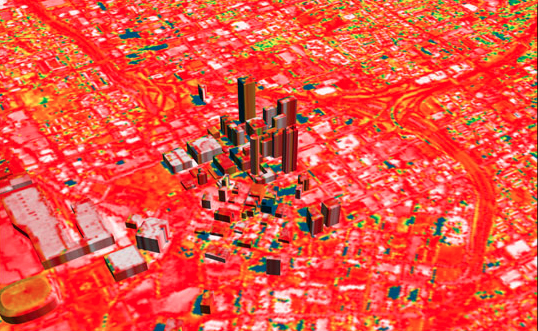Of all the impacts of global climate change, it’s extreme heat that kills more Americans each year than any other weather-related event.
The Centers for Disease Control and Prevention reports that as many as 600 people die from extreme heat in the U.S. every year. The urban heat island effect makes cities significantly warmer than their surrounding suburbs, exurbs, and rural areas, making them potentially deadly for those who lack air conditioning.
A 2016 Columbia University study projected that by 2080 up to 3,300 New Yorkers could die annually from intense heat exacerbated by climate change. The city launched a $106-million “Cool Neighborhoods” plan last year to mitigate the risks of extreme heat.
The plan includes painting surfaces white, planting more trees, creating green roofs, and building other green infrastructure to cool down several neighborhoods. In addition, the plan includes improving emergency cooling center signage and making those facilities more inviting.
Related Stories
Codes and Standards | Mar 23, 2020
Florida legislature passes bill to reduce retainage on state and local projects
House and Senate vote is nearly unanimous; law would go into effect Oct. 1.
Codes and Standards | Mar 20, 2020
Feds prod use of eminent domain to force people out of flood-prone homes
Local officials that don’t comply could lose federal money to combat climate change.
Codes and Standards | Mar 19, 2020
ASHRAE provides COVID-19 resources for operating, maintaining HVAC systems
Includes recently approved position document on Airborne Infectious Diseases.
Codes and Standards | Mar 19, 2020
CaGBC launches new version of its Zero Carbon Building Standard
Version 2 draws on lessons from more than 20 zero carbon projects.
Codes and Standards | Mar 16, 2020
Concrete industry reduces carbon footprint by 13% over five years
Result mostly due to more efficient use of Portland cement.
Resiliency | Mar 13, 2020
Feds push use of eminent domain to force people out of flood-prone homes
Local officials that don’t comply could lose federal money to combat climate change.
Codes and Standards | Mar 12, 2020
Design guide for sloped glazing and skylights updated for first time in 30 years
Helps with choosing proper glass for non-residential applications.
Codes and Standards | Mar 11, 2020
Two tree species native to the Northeast found suitable for CLT
Eastern white pine and eastern hemlock pass strength testing.
Codes and Standards | Mar 10, 2020
Prescient receives ICC certification for seismic resilience system
Technology suitable for buildings up to 12 stories in earthquake-prone areas.
Codes and Standards | Mar 6, 2020
Design firms creating plans to re-imagine D.C.’s tidal basin
Area including National Mall is facing increased flood risk.

















